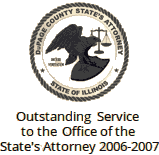630-462-9500
After Hour New Client Telephone Number 630-690-6077
1776 S. Naperville Road, Building B, Suite 202,
Wheaton, IL 60189
Blog
-

- Home
- Firm Overview
- Attorneys
- Practice Areas
- Divorce
- What To Expect During Your Divorce
- How To Choose A Divorce Attorney
- Divorce Planning
- Protecting Your Credit During Divorce
- Social Media In Divorce
- Settlement Vs. Trial
- Alimony / Maintenance
- Unallocated Alimony
- Taxes and Divorce
- Distribution of Marital Property
- Dissipation of Assets
- Retirement Plans, IRAs And QDROs
- International & Interstate Divorce
- Post Divorce Modifications & Enforcement
- Divorce FAQs
- High Net Worth Divorce
- Child Custody
- Child Support
- Collaborative Law
- Mediation
- Family Law
- Appeals
- Criminal Representation
- Divorce
- Testimonials
- Media
- Blog
- Contact

ERROR!
Something went wrong...
Recent Blog Posts
- What to Expect from the Collaborative Divorce Process
- Can I Get a Paternity Order if the Father Doesn’t Cooperate?
- Are Civil Unions Still a Thing in Illinois?
- What Do "Parental Responsibilities" Technically Include in Illinois?
- When is Adult Child Support Ordered in Illinois?
Categories
- Alimony
- Child Custody
- Child Support
- Collaborative Law
- Divorce
- Domestic Violence
- Family Law
- Hidden Assets
- Mediation
- Paternity
- Property Division
Archives
▶2025
November (2)
October (2)
September (3)
August (2)
July (3)
June (3)
May (3)
April (2)
March (3)
February (3)
January (3)
▶2024
December (3)
November (3)
October (8)
September (8)
August (8)
July (8)
June (8)
May (8)
April (7)
March (8)
February (8)
January (8)
▶2023
December (8)
November (8)
October (8)
September (8)
August (8)
July (8)
June (7)
May (8)
April (8)
March (7)
February (7)
January (8)
▶2022
December (5)
November (5)
October (7)
September (8)
August (8)
July (8)
June (7)
May (8)
April (7)
March (7)
February (6)
January (8)
▶2021
December (7)
November (8)
October (8)
September (7)
August (8)
July (8)
June (8)
May (8)
April (6)
March (8)
February (7)
January (7)
▶2020
December (8)
November (7)
October (7)
September (7)
August (8)
July (7)
June (7)
May (7)
April (8)
March (8)
February (8)
January (6)
▶2019
December (8)
November (7)
October (8)
September (8)
August (8)
July (8)
June (8)
May (7)
April (8)
March (7)
February (8)
January (7)
▶2018
December (8)
November (7)
October (8)
September (8)
August (7)
July (8)
June (3)
May (4)
April (5)
March (4)
February (3)
January (4)
▶2017
December (4)
November (5)
October (1)
July (7)
June (5)
May (5)
April (7)
March (8)
February (8)
January (7)
▶2016
December (8)
November (7)
October (7)
September (7)
August (6)
July (7)
June (6)
May (9)
April (8)
March (7)
February (7)
January (6)
▶2015
▶2014












Contact Us To Schedule A Consultation With An Attorney At Our Firm
Call 630-462-9500 or provide your contact information below and we will get in touch with you:
NOTE: Fields with a * indicate a required field.
*
*
*
From our office in Wheaton, Illinois we serve clients throughout DuPage County, Cook County, Kane County, DeKalb County, Kendall County and Will County including the communities of Naperville, Lisle, Glen Ellyn, Downers Grove, Warrenville, Winfield, West Chicago, Carol Stream, Bloomingdale, Lombard, Woodridge, Darien, Burr Ridge, Hinsdale, Clarendon Hills, Elmhurst, Oak Brook, Westmont, Addison, Roselle, North Aurora, Geneva, St. Charles, Bolingbrook, Batavia, Joliet, DeKalb, Sycamore, Yorkville and Oswego.
© 2026 The Stogsdill Law Firm, P.C.1776 S. Naperville Road, Building B, Suite 202Wheaton, IL 60189630-462-9500






